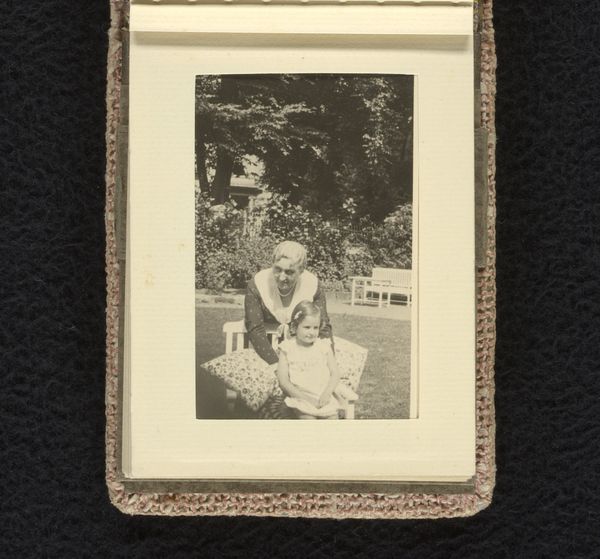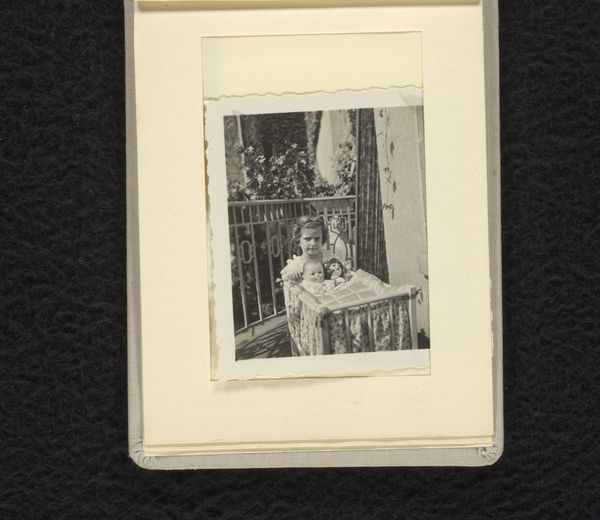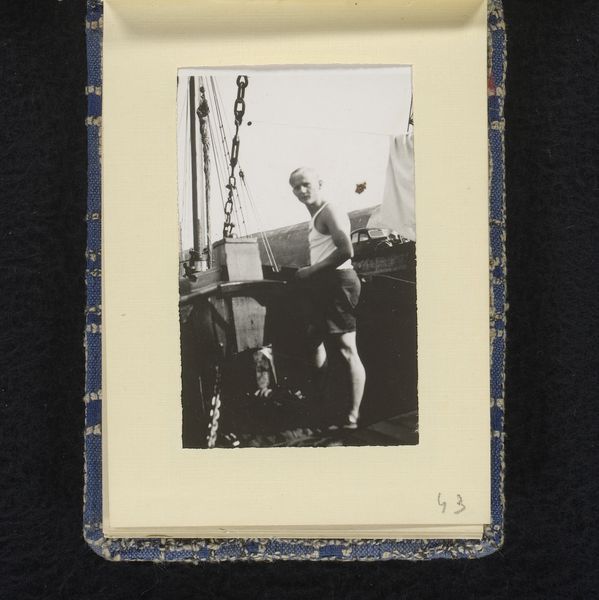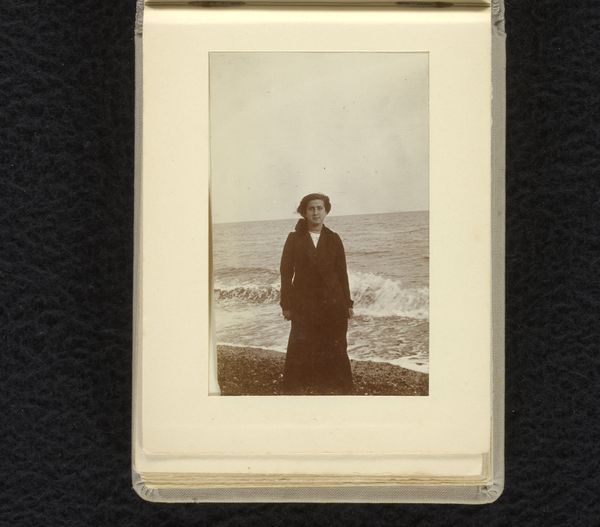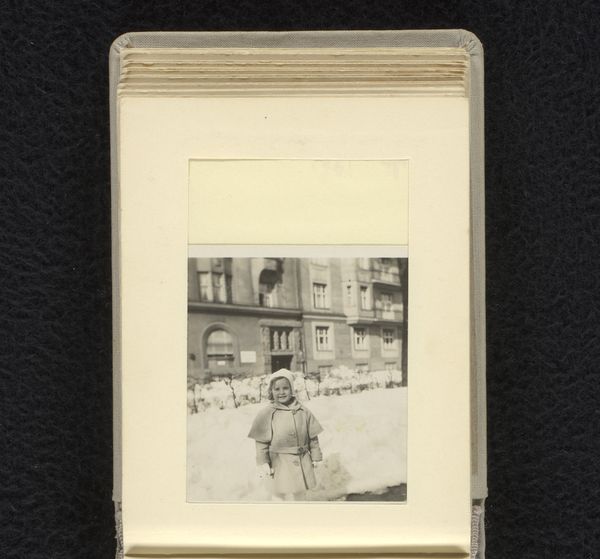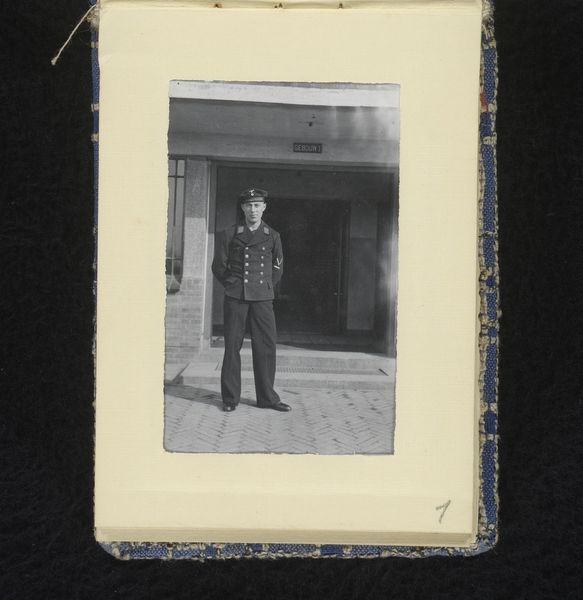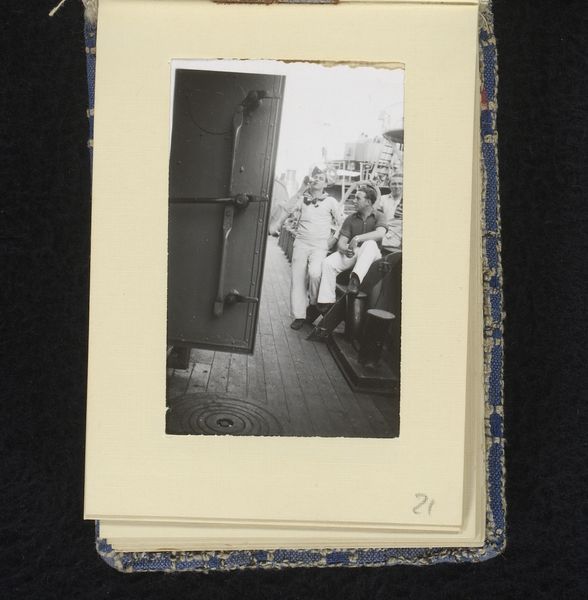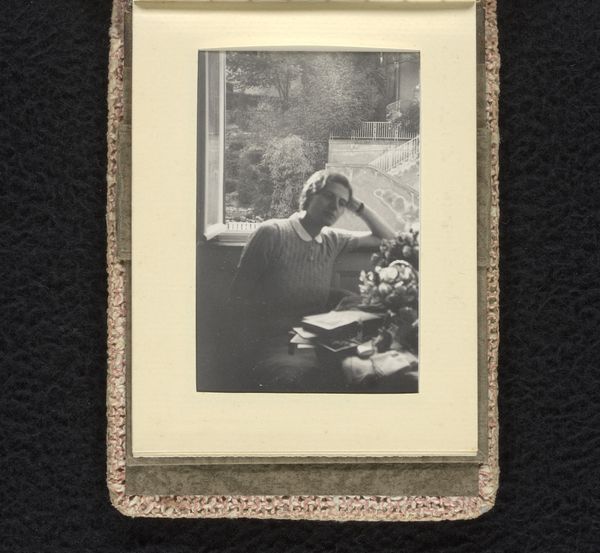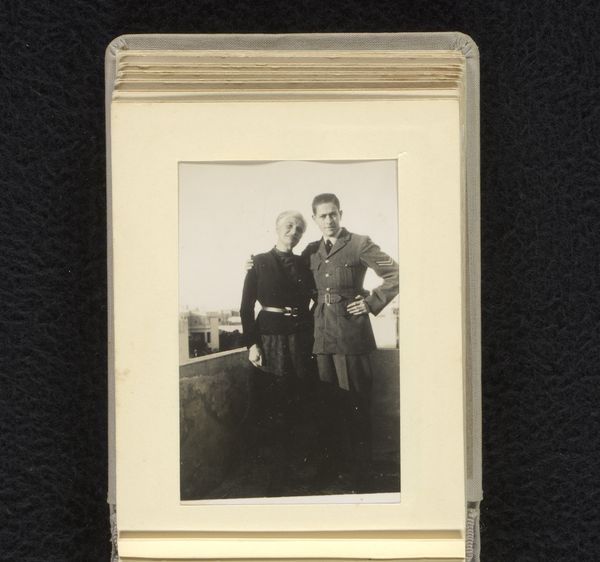
Eugen Wachenheimer voor een kerk in een besneeuwd landschap, 1922-1937, Lenzerheide c. 1922 - 1937
0:00
0:00
photography
#
portrait
#
landscape
#
photography
#
realism
Dimensions: height 90 mm, width 70 mm, height 81 mm, width 107 mm
Copyright: Rijks Museum: Open Domain
Curator: This captivating black and white photograph shows Eugen Wachenheimer, and the title suggests that the photo was taken around 1922-1937 in Lenzerheide near a church nestled in a snowy landscape. Editor: Immediately, I'm struck by the composition, which divides the space rather strikingly: a distinguished figure foregrounded against a church facade, behind which the natural textures of a blurred landscape rise. It reads as very precise and constructed. Curator: The realism here offers us insight into not just the visible reality, but into a moment of self-fashioning against the backdrop of institution and nature, both serving as quiet witnesses to Wachenheimer’s presence. What does the location speak to? Editor: Right, thinking about materials and context, a winter scene like this brings a whole suite of challenges in early photography; film exposure would be much more difficult, particularly in a very reflective environment like a snowy scene, and that struggle to manage conditions seems relevant, no? I mean, to be literally fighting with light itself. Curator: I wonder about this image’s significance within his family archive. What was Wachenheimer trying to convey? The church hints at possible religious or moral undertones within the family. His position might imply a kind of guardianship, maybe over moral rectitude in times of chaos. Editor: The choice of medium - photography - would’ve been far from ubiquitous at that time; even for someone with access. Perhaps he was attracted to photography as an efficient method of documenting himself in a place. Is that a mark of modernity itself? Curator: Could it also suggest the wish to shape an enduring familial image? Perhaps Wachenheimer intended to be perceived as both a figure rooted in tradition and mindful of societal evolution. Editor: Maybe the photographic process was his tool, quite literally, and these images functioned in that regard – a conscious attempt to forge and record both a narrative and its underlying mechanics of image-making? Curator: So, to wrap up, we see the man embedded within this carefully chosen landscape and location, serving both his legacy and engaging the dialogue of the era. Editor: Agreed, and by paying attention to how this portrait uses materials, from silver halides to social signaling, we can get some better sense of the life contained and conveyed within its borders.
Comments
No comments
Be the first to comment and join the conversation on the ultimate creative platform.
